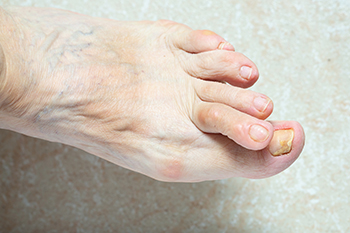
Hammertoe, a prevalent foot deformity, poses significant challenges for those affected. This condition occurs when the toe joints bend unnaturally, resembling a hammer's shape. Typically afflicting the second toe, it can result from various factors such as wearing ill-fitting footwear, muscle imbalances, or genetic predispositions. The deformity leads to discomfort, pain, and difficulty in finding suitable shoes. Left untreated, hammertoe may progress, causing rigidity and requiring medical intervention. Individuals with hammertoe often face limitations in daily activities and may experience corns or calluses due to friction and pressure. It is vital to address symptoms promptly, seeking professional advice to explore non-invasive treatments or corrective measures. Understanding the causes and symptoms of hammertoe empowers individuals to make informed decisions about their foot health, emphasizing preventive measures and early interventions to alleviate discomfort and maintain an active lifestyle. If you have this type of deformity, it is strongly suggested that you consult a chiropodist who can guide you toward relief and treatment options.
Hammertoe is a common foot deformity in which one or more of the small toes bends downwards at the middle joint. Though it may seem like a purely cosmetic issue, this is not the case. Hammertoes can be uncomfortable, painful, and even debilitating in severe cases. If you suffer from hammertoe, please consult with one of the chiropodists from Complete Family Footcare & Therapy. Our clinicians can help you maintain the health of your lower limbs and your mobility.
Symptoms
One or more small toes bending downward at the middle joint
Pain or irritation on the affected toes
Corns and calluses
Inflammation
Redness
Stiff toe joints
Sores on the tops of the toes
Diagnosis
A chiropodist can typically diagnose hammertoes through physical examination. X-rays may need to be taken to see the extent of the damage.
Treatment
Hammertoes tend to progressively worsen with time, so getting prompt treatment is very important. In its early stages, the progression of hammertoe can be slowed down or stopped. Your chiropodist may suggest changes in your footwear. Wearing wide, comfortable shoes with a larger toe area and a low heel can help you avoid putting pressure on your toes. You may also be prescribed orthotics. Over-the-counter medications or corticosteroid injections may be used to relieve pain. If you have any corns or calluses, your chiropodist may suggest padding them to avoid further irritation. In advanced cases, surgery may be suggested.
If you have any questions, please feel free to contact our offices located in . We offer the newest diagnostic and treatment technologies for all your foot care needs.
